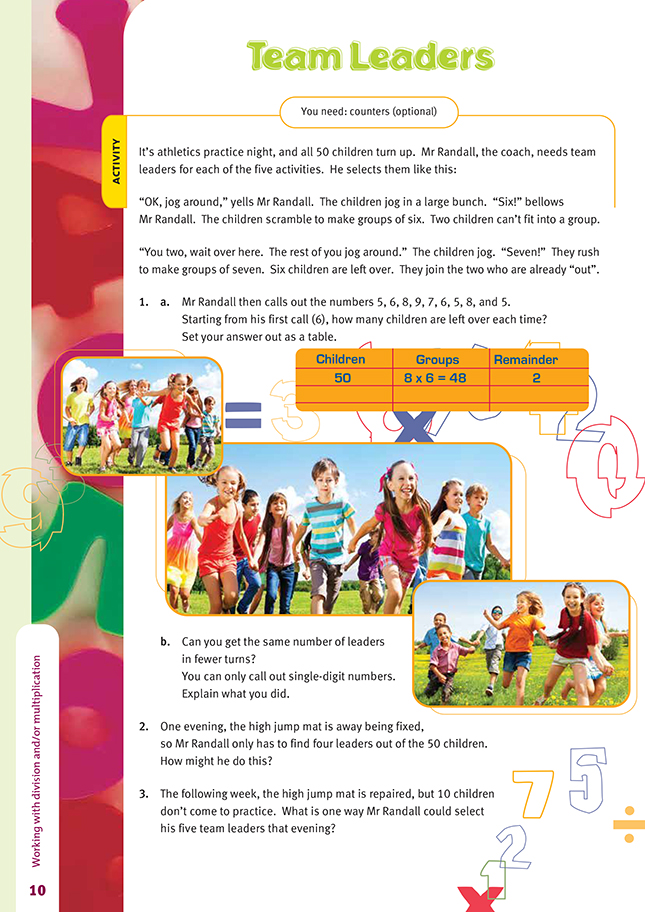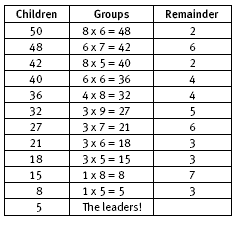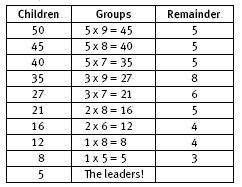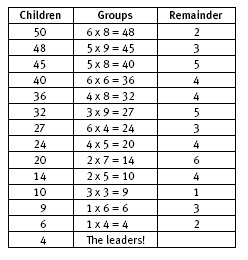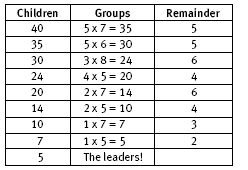This is a level 3 number link activity from the Figure It Out series. It relates to Stage 6 of the Number Framework.
A PDF of the student activity is included.
Click on the image to enlarge it. Click again to close. Download PDF (258 KB)
use knowledge of multiplication and division facts to solve problems with remainders
FIO, Link, Number, Book Three, Team Leaders, page 10
Counters (optional)
In this activity, the students use their knowledge of multiplication and division basic facts to work out remainders. Make sure that the students understand the concept of division and remainders. Acting out the situation with the group would be a good way to ensure that the students understand the context of this activity. It is also a fun activity that they are likely to enjoy enacting. Alternatively, the students could
represent the activity with counters to help them see what’s happening.
To answer question 1b, the students need to choose the leaders in fewer turns. You could discuss with them how they might do this. They should be able to work out that the higher the remainder, the sooner the number of children left reduces. For example, when Mr Randall begins by calling out “Six!”, the children form eight
groups of six, which leaves two over. But if Mr Randall had called out “Nine!”, the children would have formed five groups of nine, and five children would have been left over. The students can use this approach of aiming for the highest possible remainder when they work out the answers to questions 2 and 3.
Answers to Activity
1. a. You could set out your answer like this:
b. Answers will vary. One solution, with two fewer moves is:
2. Answers will vary. One solution is:
3. Answers will vary. One solution is
